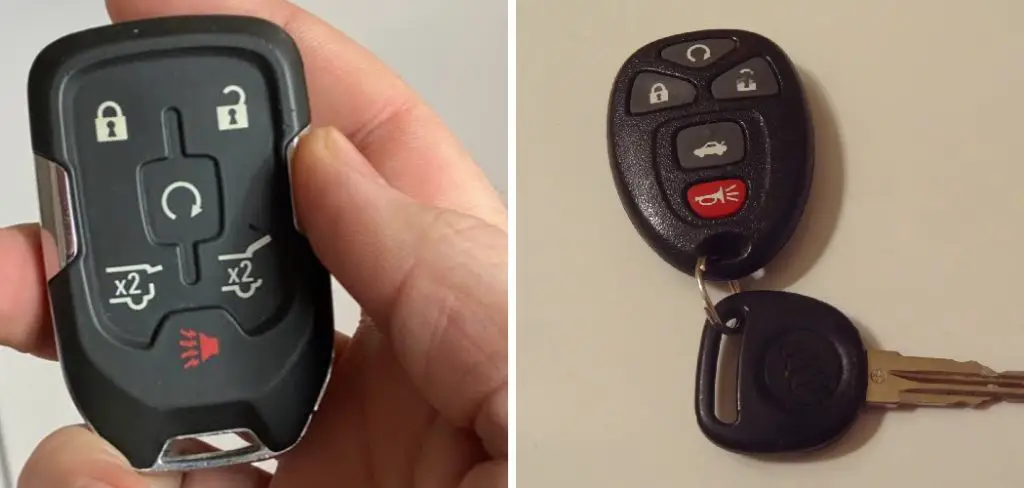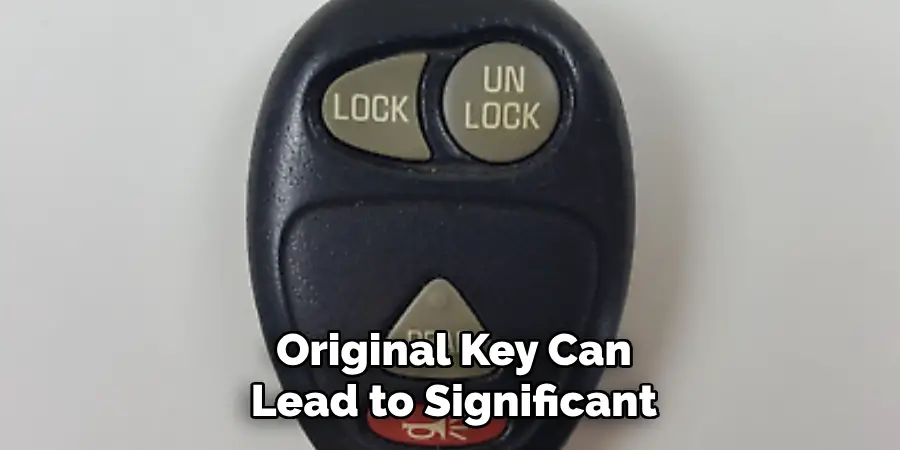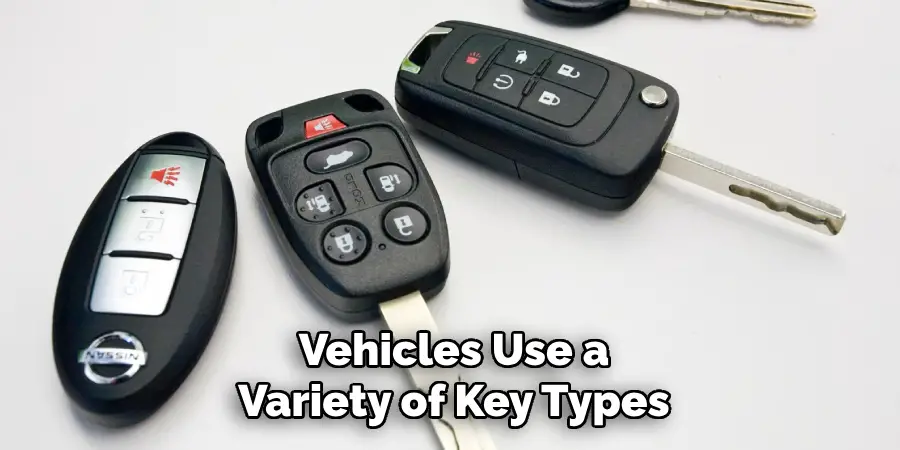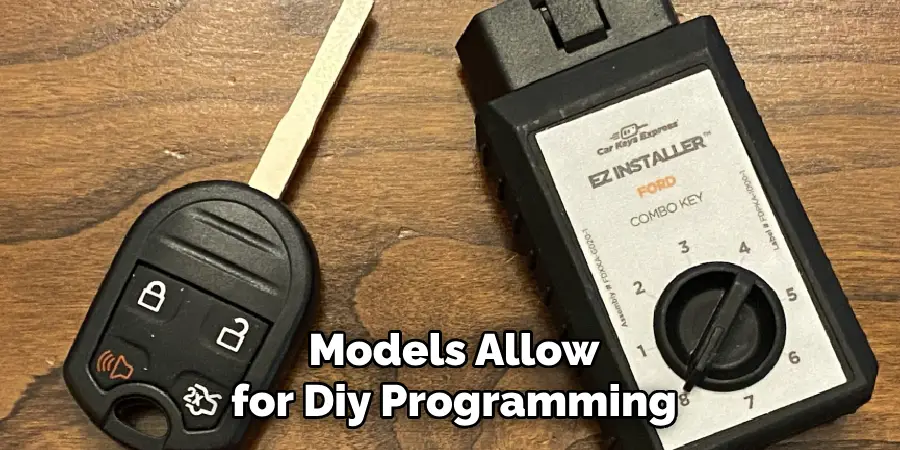Programming a new GM key is essential if the original key is lost or damaged, ensuring you maintain vehicle access. Often, losing the original key can lead to significant inconvenience and stress, particularly due to security measures that are in place to prevent unauthorized access. These measures include the integration of transponder chips and immobilizer systems, making it challenging to program a new key without the original.

Compatibility is another hurdle, as different GM models and years have varying requirements. This article addresses these challenges by providing a clear, step-by-step guide on how to program GM key without original. With a focus on achieving successful programming, the guide aims to empower vehicle owners to handle key replacement independently where possible while recognizing when professional assistance is necessary.
Types of GM Keys and Their Programming Methods
Overview of GM Key Types
General Motors (GM) vehicles use a variety of key types, each with distinct features and programming needs. Traditional metal keys are straightforward, often lacking electronic components, making them simple to cut and replace. Transponder keys, however, incorporate a chip within the key head that interacts with the car’s immobilizer system.
This chip must be programmed to the vehicle’s specifications, preventing the car from starting without the correct code. Keyless fobs, the most modern option, offer advanced convenience with remote entry and ignition capabilities. These fobs need to be programmed, often come with additional battery considerations, and require syncing with the vehicle’s onboard systems.
Varying Programming Requirements
Programming requirements for GM keys vary significantly between older and newer vehicle models. Traditional metal keys often only require precise cutting to match the vehicle’s locks, with no further programming necessary. In contrast, transponder keys and keyless fobs require intricate programming, sometimes necessitating specialized tools or software.
While some GM models allow for DIY programming, enabled through sequences involving the ignition switch, others may demand professional intervention. This is particularly true for more advanced systems in newer models, which could require equipment only available at dealerships or with certified locksmiths, highlighting the importance of verifying your model’s specific needs before attempting programming.

Determining if DIY Programming is Possible for Your GM Model
Check the Vehicle Manual or Online Resources
The first step in determining if DIY programming is possible for your specific GM model is to consult the vehicle’s owner’s manual. This manual often includes vital information about your car’s key systems and whether home programming is an option. Additionally, online resources such as GM’s official website or forums dedicated to car enthusiasts can be invaluable.
These platforms may offer detailed guides and community feedback specific to your model’s key programming requirements, helping you understand the feasibility of a DIY approach before proceeding with key-cutting or other steps.
Look for OBD-II Port Programming Compatibility
OBD-II port-based programming is a method that can simplify the DIY process for certain GM models. This system allows you to use the ignition switch with the vehicle’s onboard diagnostic system to program a new key. To determine compatibility, inspect your vehicle for an OBD-II port—typically located under the dashboard near the steering wheel.
If your model supports it, you can follow specific programming sequences involving the port and ignition to program the key yourself. This method can be particularly efficient and cost-effective, eliminating the need for dealership visits or professional locksmith services.
How to Program GM Key Without Original: Steps to Follow
Step 1: Obtain a New Key Blank
Acquiring a compatible key blank is critical to begin programming a new GM key without the original. The key blank should match your vehicle’s specific year, make, and model to ensure proper alignment and electronic compatibility. Sourcing the key blank can be done through a GM dealership, which guarantees authenticity, or from reputable online retailers specializing in vehicle keys. Verifying compatibility using your vehicle’s details is essential to avoid future programming issues. An incorrect key blank could fail to start the vehicle, thus emphasizing the need for precision at this stage.

Step 2: Have the Key Cut to Match the Lock
Once the appropriate key blank is obtained, the next step is to have it cut to match your vehicle’s existing lock. This often requires providing a Vehicle Identification Number (VIN) or lock code, ensuring the new key precisely matches the ignition or door lock. You have two main options for cutting the key: a professional locksmith or a GM dealership.
Locksmiths offer flexibility in terms of locations and hours, while dealerships assure dealership-grade precision and cutting-edge technology. Whichever option you choose, ensuring the accuracy of the cut key is vital for subsequent programming success.
Step 3: Begin the Programming Process
To program the new key, insert it into the ignition and turn it to the “ON” position. This should be done for a determined period, typically around 10 minutes, until the vehicle’s security indicator light switches off. This initial phase establishes communication between the key’s transponder and the vehicle’s immobilizer system. It’s usually necessary to repeat this process a few times—often three cycles in total—turning the key back to the “OFF” position and then back to “ON” to ensure the programming sequence is fully completed.
While the specifics can vary depending on your GM model, maintaining precise timing during each step is crucial. Detailed instructions or model-specific tips can often be found in forums or your owner’s manual to assist with this procedure, helping to streamline the process and increase the likelihood of successful programming.
Step 4: Test the Key
After completing the programming sequence, it’s time to test the key by attempting to start the engine and operate the lock and unlock functions. Initially, turn the ignition to start the engine, ensuring it runs smoothly without interruptions. Additionally, verify the lock/unlock functions from the outside to confirm the remote components are functioning.

If the key doesn’t work as expected, begin troubleshooting by reviewing the programming sequence you followed. Double-check that all steps were completed accurately, as even minor mistakes can lead to failure. Consult additional resources or consider professional assistance if needed to achieve a functioning key.
Troubleshooting Common GM Key Programming Issues
Key Fails to Program
When a GM key fails to program, it could be attributed to factors like incorrect timing during the procedure or using an incompatible key blank. Inaccurate timing can disrupt the communication between the key and the vehicle’s immobilizer system, failing. To restart the process, ensure that you meticulously follow each step as outlined in your model-specific instructions.
Start by re-checking the timing of turning the ignition “ON” and “OFF” during programming cycles. Additionally, verify that the key blank is compatible with your vehicle model by cross-referencing with the manual or online resources. Correcting these aspects often resolves the issue, allowing for successful key programming.
Security Light Remains On
If the security light stays illuminated after attempting to program a key, it may indicate issues with the vehicle’s anti-theft system. This could happen if the immobilizer does not recognize the new key or if there is an error during the programming sequence. To address this, try resetting the vehicle’s security system by disconnecting the battery for a few minutes before reconnecting it.
If the light remains on, consult your owner’s manual for additional troubleshooting steps, as each GM model may have specific requirements. If issues persist, seeking professional assistance to diagnose potential problems with the vehicle’s anti-theft system is advised.
When to Seek Professional Help for Key Programming
Recognizing When DIY Programming Isn’t Feasible
While programming a new GM key by yourself can be a cost-saving option, certain scenarios necessitate professional intervention. If you’ve meticulously followed all instructions yet still face issues, this could indicate that the vehicle’s programming requires specialized diagnostic tools unavailable to the average user.

Similarly, complex problems with the vehicle’s immobilizer system may arise, such as persistent security lights or a failure to recognize the new key, signaling that professional assessment is needed. In such cases, leveraging a dealership’s expertise or a qualified automotive locksmith is advisable to avoid compromising your vehicle’s security features.
Options for Professional Programming: Dealership vs. Locksmith
When seeking professional help for key programming, you have two primary options: a GM dealership or an automotive locksmith. Each has its advantages and drawbacks. Dealerships tend to offer the most reliable service, with access to the latest equipment and expertise specific to your vehicle model, though often at a higher cost and potentially inconvenient locations.
Locksmiths can be more flexible, usually offering competitive pricing and mobile services that come to you. However, they may not always have the specific, model-focused tools necessary for certain programming tasks. Balancing these factors based on your priorities can guide you toward the most suitable professional service.
Tips for Avoiding Future Key Loss and Reprogramming Needs
Creating Spare Keys
After successfully programming a new GM key, creating a spare key as a preventive measure against future distress is prudent. Having a spare on hand ensures that you won’t need to undergo the entire programming process again and can save on unexpected costs. Store these spare keys in a secure yet accessible location—consider a labeled spot in your home or a secure container in your vehicle—ensuring they are easy to find in a time of need but protected from unauthorized access.
Key Tracking and Safety Tips

To safeguard against misplacing your keys, leveraging technology such as Bluetooth key finders can be highly effective. Devices like these attach to your keyring and sync with a mobile app, allowing you to track your keys from your smartphone. Additionally, establishing a consistent habit, such as placing keys in the same spot daily, can reduce the risk of losing them. These solutions not only prevent future stress but also enhance overall key security.
Conclusion
Programming a new GM key without the original is straightforward if you follow the correct steps and guidelines. Begin by providing a compatible key blank and locating your vehicle’s specific programming instructions. Carefully adhere to each programming phase, such as timing the ignition sequences meticulously, to enhance your chances of success. If obstacles arise, remember that professional help is available, and knowing your limits can save both time and money.
Consider seeking assistance from a dealership or locksmith if issues like immobilizer recognition occur. Additionally, taking preventive steps like creating spare keys and using technology like Bluetooth key finders can greatly minimize the chances of future inconvenience. Learning how to program GM key without original not only imparts a valuable skill but also empowers you to handle key-related emergencies efficiently.
